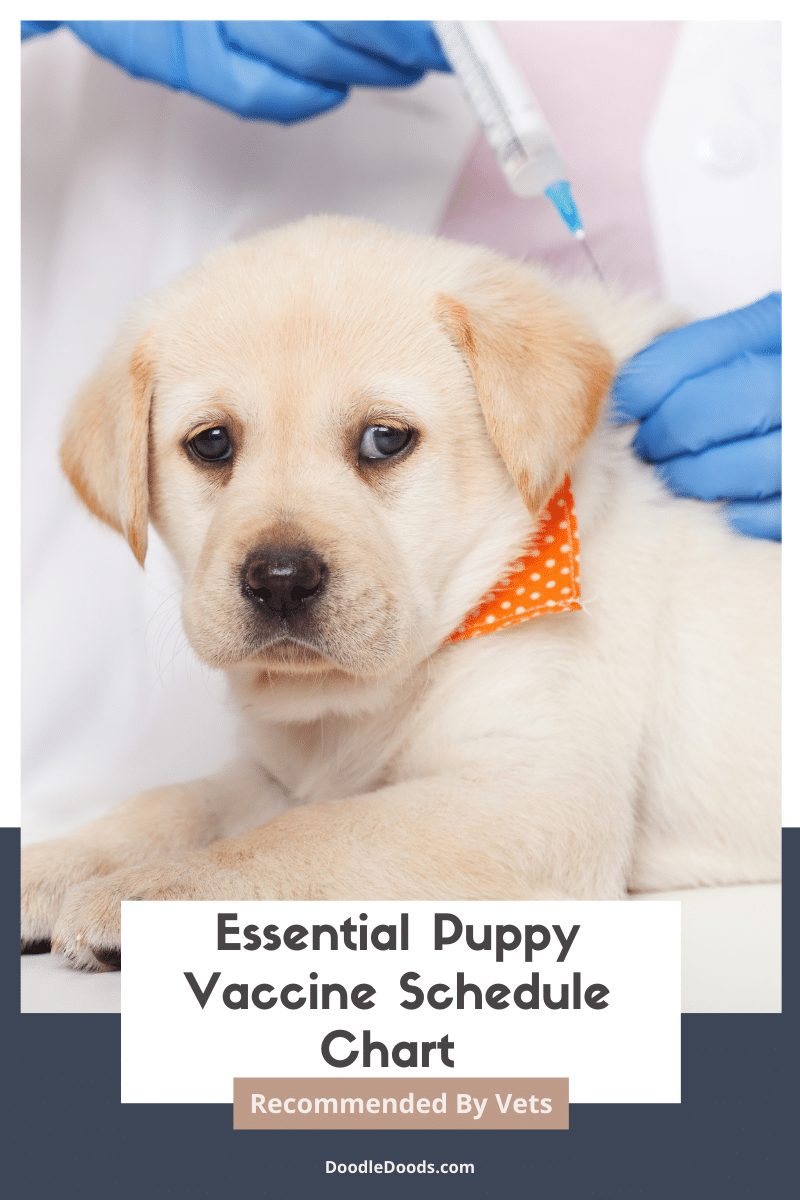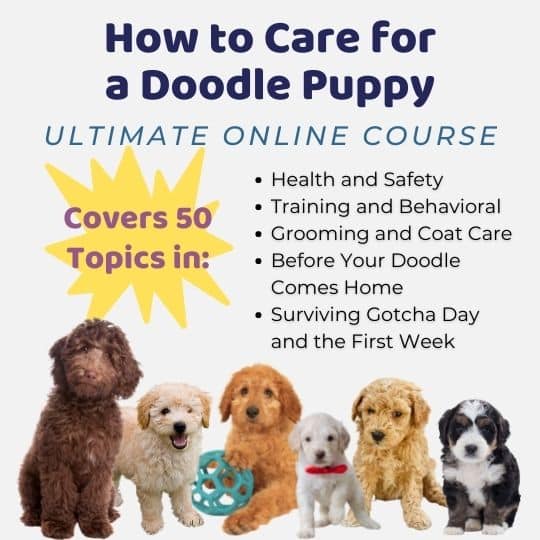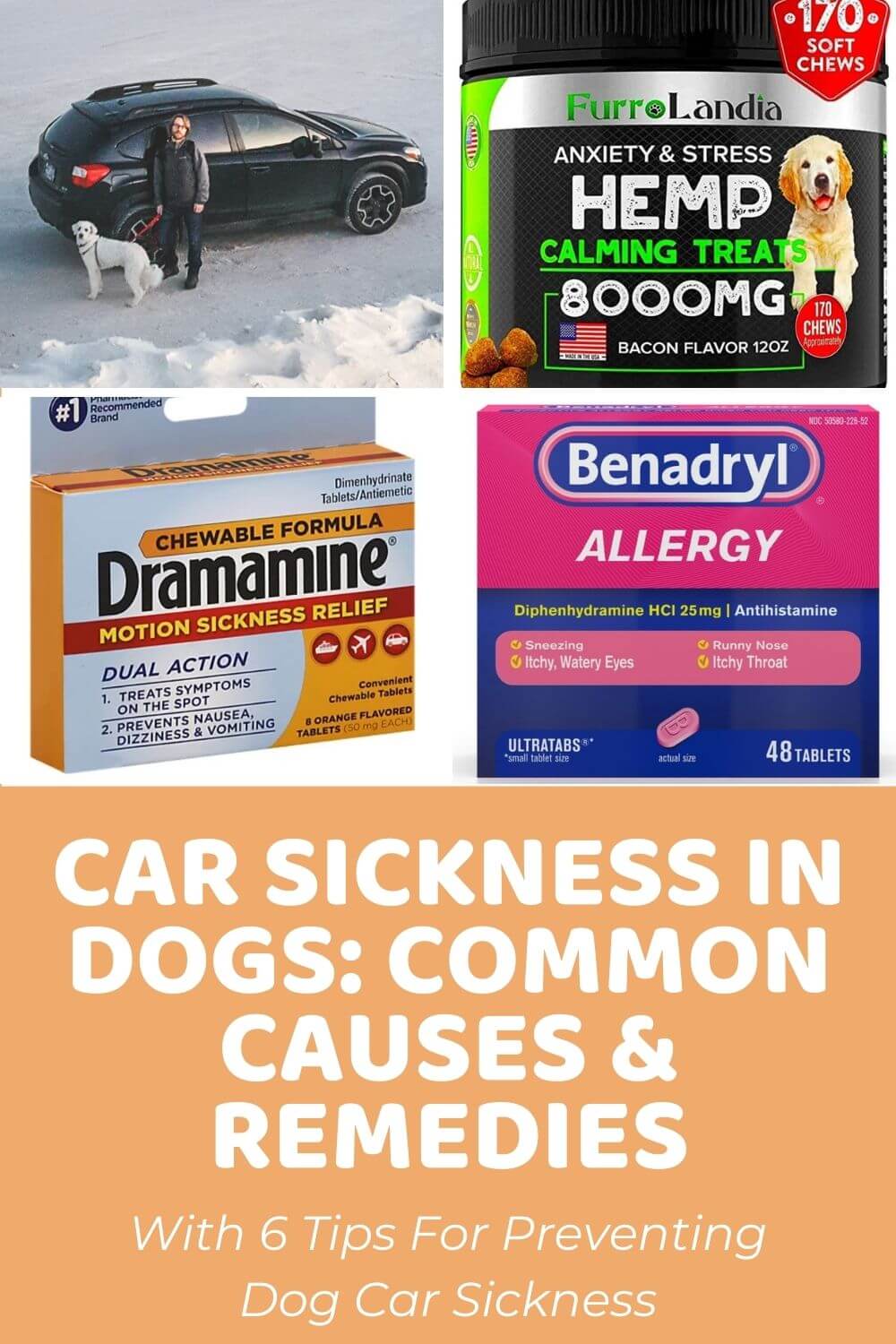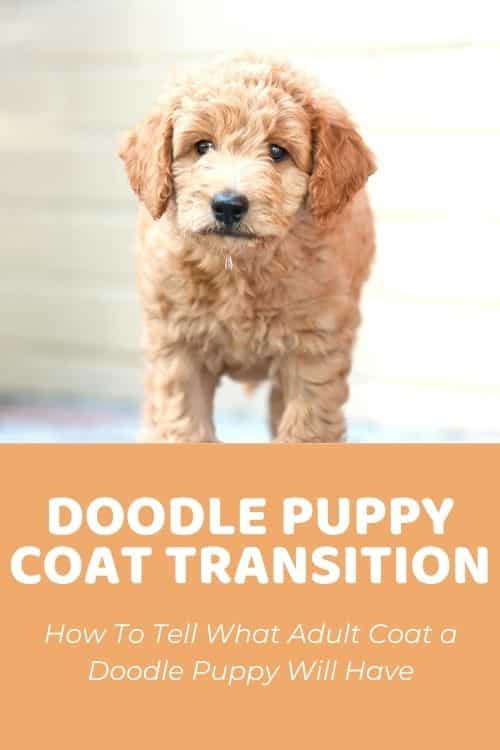For any dog owner, staying on top of their new puppy vaccine schedule is an important task. This is an especially big concern for puppy owners, as young dogs are more susceptible to diseases and at an increased risk of catching viruses. In this article, you’ll find a comprehensive puppy vaccine schedule that gives you the exact timeline when dogs should receive their puppy shots. We’ll also answer all of your questions surrounding this important topic, such as: what vaccines do puppies need? Why should you vaccinate your dog? How many sets of shots do puppies need? And so much more. Let’s get started!
Essential Puppy Vaccine Schedule Chart: Introduction
Adopting a puppy is all fun and games until you realize that your new fur baby requires your utmost care from the day you bring them home. We know the feeling of wanting to show off your new little pup to every single person you know, taking them to the dog park to meet new friends, and whatnot. However, you should vaccinate your puppy before they step into the large world and meet new people and dogs. As they’re still babies, their immune systems aren’t as well developed. Therefore, they’re at a much higher risk of catching viruses, diseases, and harmful bacteria.
Why Should You Vaccinate Your Dog Or Puppy?
One of the most important reasons for vaccinating your puppy is to boost their immunity and protect them from harmful diseases. Of course, you could keep your puppy in the house up until their first birthday. However, one of the key stages in your puppy’s upbringing is early socialization. Socializing your puppy is essential for them to learn crucial life skills and help them grow into a well-behaved and well-rounded adult.
As you may know, veterinary professionals, breeders, and shelters do not recommend you let your pup come into contact with other dogs until they’ve been properly vaccinated. It’s because of this very reason that you should keep up with your puppy’s vaccine schedule, so they get to experience life and all stages of growth to the fullest.
New Puppy Vaccination Schedule Chart
Puppies need quite a few different vaccines within their first year to keep them healthy and to prevent some of the most dangerous diseases that could harm them. Before we get into the details of each and every disease that puppies have to get vaccinated against, here’s an easy-to-follow puppy vaccine schedule chart that you can use as a helpful guideline to keep track of your pup’s essential shots. This puppy shot chart includes both core vaccines and non-core vaccines that are recommended by most veterinary professionals and other dog experts.
| Age | Core Vaccines | Non-Core Vaccines |
| 6-8 weeks | DHPP or Canine distemper, parvovirus | Bordetella Bronchiseptica |
| 10-12 weeks | DHPP (Canine distemper, hepatitis, parainfluenza, parvovirus) | Influenza, Bordetella Bronchiseptica, Leptospirosis, Lyme disease |
| 16-18 weeks | DHPP, rabies | Influenza, Bordetella Bronchiseptica, Leptospirosis, Lyme disease |
| 12-16 months | DHPP, rabies | Coronavirus, Bordetella Bronchiseptica, Leptospirosis, Lyme disease |
| Every 1-2 years | DHPP | Influenza, coronavirus, Bordetella Bronchiseptica, Leptospirosis, Lyme disease |
| Every 1-3 years | Rabies |
Of course, the puppy vaccine schedule chart above is a recommended guideline for most dogs. But depending on your pup’s health and other factors, your vet might recommend a slightly different timeline or scrap some vaccines altogether.
What Vaccines Do Puppies Need?
Whether you knew it before or just found out, dogs need a wide range of puppy shots over the course of several months. In the puppy shot schedule chart above, we listed all the essential vaccines that you should have administered to your precious pal. But what do all of these vaccines mean and why are they important?
Here we’ve compiled a list of all the diseases that can be prevented with vaccinations at appropriate life stages. There are quite a few diseases in this list, but don’t worry, your veterinary professional will know exactly what shots your puppy will need.
Canine Distemper
Canine distemper is a serious disease that’s caused by a virus that attacks the respiratory, gastrointestinal, and nervous systems. It affects both puppies and adult dogs. It’s a contagious disease that spreads through airborne exposure, such as sneezing or coughing. It can also be transmitted by shared water and food bowls, chew toys, and other equipment or surfaces. The common symptoms of canine distemper are watery, pus-like discharge from the dog’s eyes, fever, coughing, nasal discharge, lethargy, loss of appetite, vomiting, unusual behaviors like circling around, tilting the head, muscle twitches, jaw movements, salivation, convulsions, seizures, and in more severe cases paralysis. Canine distemper is often fatal and there’s no cure for it. However, it can be prevented with proper immunizations.
Many vets refer to the most important puppy shots as DHPP. This actually includes immunization for canine distemper, canine hepatitis, parvovirus, and canine parainfluenza. This is considered as a core vaccine and it’s usually administered at 6 weeks of age. Some vets administer DHLPPC shots, which include all of the diseases we mentioned above and the additional leptospirosis and coronavirus vaccines.
Canine Hepatitis
The infectious canine hepatitis or adenovirus is an acute contagious disease. It affects the liver, kidneys, spleen, lungs, and the eyes. In severe cases, it can lead to liver failure and ultimately death. There’s no cure for the disease, but the symptoms can be managed and treated with proper veterinary care. Most common symptoms of canine hepatitis are fever, excess thirst, vomiting, jaundice, loss of appetite, enlarged stomach, or liver pain. The DHPP and DHLPPC shots also contain the vaccine against canine hepatitis.
Canine Parainfluenza
Canine parainfluenza virus is another highly contagious respiratory virus and it’s one of the viruses that can contribute to kennel cough. The most common symptoms of canine parainfluenza are dry or moist coughs, low fever, nasal discharge, lethargy and lack of energy, and loss of appetite. Dogs can shed canine parainfluenza for up to 2 weeks after infection and it’s usually transmitted through air. Although the vaccine for canine parainfluenza is considered as a non-core vaccine, it’s often included in the DHPP or DHLPPC shots.
Leptospirosis
Leptospirosis is a bacterial infection caused by the Leptospira bacteria. It’s found worldwide in soil and water and there are many strains that can cause the disease. As it’s a zoonotic disease, it can be spread from animals to people, and vice versa. Most commonly, pups are infected from drinking water from lakes and rivers that are contaminated with infected urine, coming in contact with infected wildlife or farm animals, or from contact with rodents or other dogs. Common symptoms of leptospirosis in dogs include fever, stiffness and pain in muscles and joints, shivering, weakness, depression, loss of appetite, excessive thirst and urination, extreme dehydration, jaundice, difficulty breathing, or kidney failure. Again, the vaccine for leptospirosis is a non-core vaccine, but it’s included in the DHLPPC shots.
Parvovirus
Parvovirus is one of the most dangerous, highly infectious diseases that often affects puppies and unvaccinated dogs. Parvo causes gastrointestinal complications like lethargy and depression, loss of appetite, vomiting, severe diarrhea, fever or hypothermia, severe weight loss, weakness, stomach pain, and rapid heartbeat. All of these symptoms lead to severe dehydration and affect the immune system. If left untreated, parvovirus can quickly become lethal and it’s especially dangerous for puppies of 6 weeks to 6 months of age. It spreads very easily and it’s extremely resistant to heat, cold, and humidity. DHPP and DHLPPC puppy shots include the vaccine for parvovirus.
You can learn more about parvovirus from our guide Parvo In Dogs: Stages, Symptoms, And Treatment.
Coronavirus
First things first, the canine coronavirus is not the same virus as SARS-CoV-2 that causes COVID-19. Canine coronavirus (CCoV) has been around for ages. It’s a highly infectious disease that commonly affects the gastrointestinal system and sometimes the respiratory system. It’s usually transmitted through contact with infected feces or by sharing food bowls or water bowls with infected dogs. The most common symptoms of canine coronavirus include vomiting, diarrhea, and loss of appetite. Coronavirus shots are considered as non-core vaccines, but they are included in the DHLPPC shots.
Bordetella Bronchiseptica
Bordetella bronchiseptica is the leading cause of kennel cough. It’s a highly infectious bacterial respiratory disease, which manifests in coughing, retching, sneezing, nasal discharge, loss of appetite, fever, lethargy, and can lead to pneumonia, seizures, or even death. The bacteria causes inflammation of the trachea and bronchi, and it’s usually transmitted through direct contact, through the air, or contaminated objects or equipment. It can also be transmitted between dogs and cats. Although the shot for bordetella bronchiseptica is a non-core vaccine, it’s usually administered to puppies as early as 6 weeks old.
Lyme Disease
Just like humans, dogs are at a risk of contracting Lyme disease through infected tick bites. It can quickly spread through the dog’s bloodstream and affect different organs, joints, or cause overall decline in the dog’s wellbeing. The most common symptoms of Lyme disease are loss of appetite, lethargy, fever, lameness of limbs, swelling of joints, or overall stiffness, discomfort, and pain. It can also lead to kidney failure, or severe cardiac or neurological problems, which can prove to be fatal. The vaccine for Lyme disease is considered as non-core, but it’s usually administered starting from 10-12 weeks of age.
Rabies
Rabies is one of the most dangerous viral diseases. It’s usually transmitted through bites of rabid animals, usually wild animals. This disease attacks the brain and spinal cord, and if not treated quickly, it typically leads to death. The most common symptoms of rabies in dogs are anxiety, aggression, becoming restless and irritable, sometimes becoming overly excited or very uninterested, fever, difficulty swallowing, excessive drooling, stumbling, seizures, or paralysis. Puppies usually receive their first rabies shots around 3 months old, and they should be boosted as required by the law in your state.
Heartworm
Puppies and dogs can contract heartworm even just from a single mosquito bite. Heartworm spreads worms in the heart and pulmonary arteries, sometimes even to the liver and kidneys. As these worms can grow as long as 14 inches, they can block the arteries and injure the organs. In the first stages of infection it’s not uncommon for pups to exhibit no symptoms at all. However, your dog might start showing symptoms like lethargy, coughing, loss of appetite, or difficulty breathing at later stages. Although technically there isn’t a vaccine for heartworm, it’s recommended you get your pup injected with a heartworm prevention shot every 12 months.
When Should You Start Puppy Vaccinations
Typically, puppies go to their forever homes with at least some vaccines that have already been administered at the shelter or kennel. Now your job is to continue with the puppy vaccine schedule. Whether you adopt your pup from a shelter or a breeder, you can usually count on their previous caretaker having administered at least some age-appropriate vaccinations. Typically, puppies receive their first puppy shots around 6 to 8 weeks of age. Always ask from the breeder or shelter about all the vaccines your pup has received and take this information to your vet. This way you can schedule the next shots in a timely manner.
Puppies who are still feeding on their mother’s milk get their initial immunity boost from the milk. The mother’s milk usually contains antibodies, which the puppy will then receive from its food. After puppies are weaned off of the mother’s milk, it’s time to start with vaccine shots.
But how many sets of shots do puppies need? During their first 6-18 weeks, puppies should receive 3 to 4 sets of shots, each of them around 3-4 weeks apart. You can also use our puppy shot chart above for an easy to follow guide.
Vaccine Boosters For Pups
As you learned from the new puppy vaccine schedule chart above, vaccine boosters also hold an important role in keeping your dog safe and protected. The most important shots are administered at 6-8 weeks, 10-12 weeks, and 16-18 weeks old. After that, puppies are usually ready to start mingling with other dogs.
However, to keep the vaccines working at full mode, you should keep in mind to take your pup for booster shots around 12-16 months of age, and later on every 1-3 years, depending on the vaccine. Your vet’s office should have all the records of your pup’s vaccinations and they’ll notify you about the necessary shots during your regular vet check-ups.
For example, a Goldendoodle shot schedule would look something like this:
- First puppy shots at 6-8 weeks of age;
- Second round of vaccines at 10-12 weeks of age;
- Third round of essential vaccinations at 16-18 weeks – now your pup is ready to start discovering the outside world!
- First round of boosters at 12-16 months of age;
- After every 1-2 years, DHPP and non-core vaccine boosters;
- After every 1-3 years, boosters for rabies.
Tips For Handling Puppy Vaccinations
Many puppies and dogs aren’t too thrilled about going to the vet’s office. Some might even get way too anxious and scared of the whole ordeal. If your pup is one of them, don’t worry, they’re not the only one! For this reason, we’ve put together a few tips that will make your trips to the vet much easier:
- Stay cool, calm, and collected. Dogs read human language and body language very easily, so it’s your responsibility to set an example with your behavior. The calmer you are, the easier it will be for your pup to handle the trip to the vet.
- Prepare your pup for car rides. It’s not uncommon for some dogs to become car sick or just anxious about car rides. Make sure your dog is securely seated, play some calming music, give them a toy, and try to make the whole experience as calm as possible. You might also want to cover their transport cage with a blanket to reduce outside stimulation.
See also: Dog Car Sickness: Common Causes and Remedies - Have some yummy treats at hand. You know what all dogs love? Treats! Make sure you have some tasty treats for your puppy and if they’re anxious, you might even want to try some calming CBD treats.
Risks And Side Effects Of Puppy Vaccinations
Although puppy vaccines are essential and boost your little companion’s immunity, you should also beware of the risks and side effects that some dogs might experience. Serious side effects are rare, but they can manifest in some cases. More serious adverse reactions to vaccines include fever, loss of appetite, sluggishness, swelling on face or paws, hives, diarrhea, vomiting, difficulty breathing, collapsing, or in case of anaphylactic shock, seizures. If you notice that after vaccinations your pup experiences any of the more serious symptoms, we urge you to contact your vet as soon as possible.
There are also milder side effects, which usually aren’t a reason to worry about. These include swelling and pain on the injection site, some tiredness, or a little bit of sneezing.
Puppy Vaccine Schedule: FAQ
Typically, pups receive their first round of shots right after they’ve been weaned from the mother’s milk. This usually happens around 6-8 weeks of age. The next rounds of shots are administered in the space of 3-4 weeks each, and later on come the booster shots around their first birthday and every year after that. Make sure you check out our puppy shot chart above, which is a great guideline for most puppies and dogs.
Puppies need at least 3 sets of puppy shots around 6-8 weeks old, 10-12 weeks old, and 16-18 weeks old. However, depending on your dog’s health, your vet might recommend a set of 4 shots, if necessary.
Most commonly, it’s recommended that pups don’t go outside and mingle with unvaccinated dogs before they’ve finished their first 3-4 rounds of puppy shots. However, if your veterinarian has given you the green light, you might be able to take your pup outside to safe locations after the first 2 rounds of shots, where it’s unlikely to come in contact with infections and diseases.
Essential Puppy Vaccine Schedule Chart: Conclusion
To conclude, vaccinating your puppy is not only crucial for their physical health and wellbeing, but also gives your dog the chance to socialize and be introduced to new places, situations, and other pets. And although there are some risks associated with vaccines, the benefits far outweigh the risks. We hope our puppy vaccine schedule guide has been a helpful resource in understanding this important topic, so you can keep your pup safe and sound while exploring all the beauty they have to discover throughout their lifetime.
The information on this page is for informational purposes only. It is not intended to be a substitute for qualified professional veterinary advice, diagnosis, or treatment. Always seek the advice of your veterinarian or other qualified animal health provider with any questions you may have.










